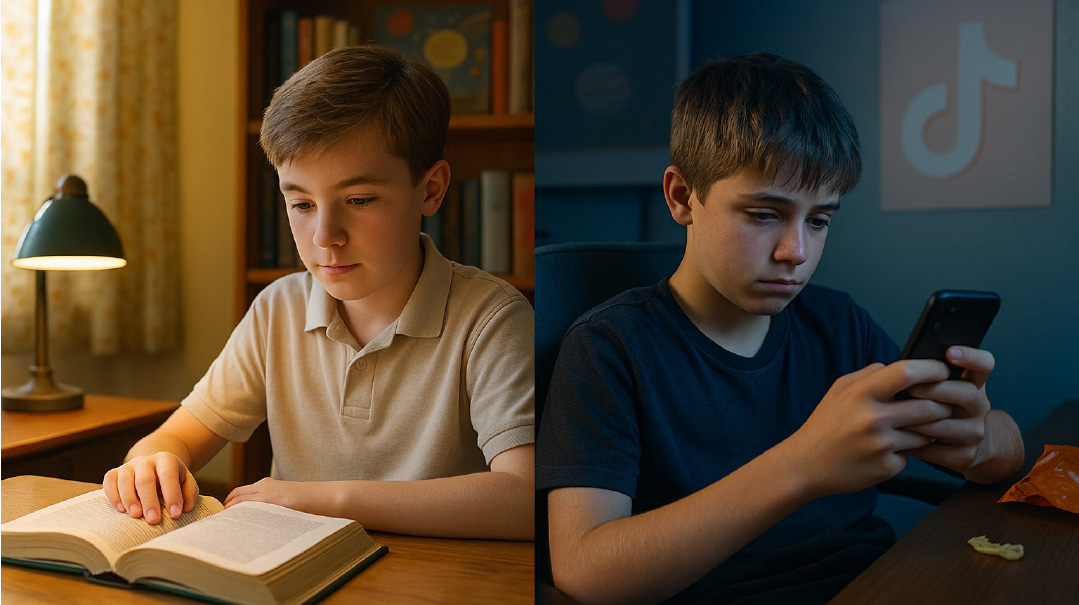Overflowing with Simchah

Only Succos is referred to in our prayers as zeman simchaseinu — the time of our rejoicing
T
he first night of Succos is my favorite time of the year — the one when my inner sense of well-being is most consonant with that commanded by the halachah. Assuming that it does not rain, the temperature is almost always perfect, neither too hot nor too cold. And with only a few lights illuminating the darkness, this is as close as we ever get to eating by candlelight.
Simchah often connotes expansion beyond one’s individual boundaries and the joinder with a larger unit or something beyond oneself. And my mood on Leil Succos is certainly overflowing with love for my family gathered around the table and a feeling of being connected to the Ribbono shel Olam, as I glance upward to see the stars through the sechach.
When our ancestors farmed the land, Succos was a joyous time because it marked the end of the agricultural cycle. The farmer could contemplate his grain now safely stored for the winter with both satisfaction and gratitude. Most of us are no longer tied to the agricultural cycle of sowing, reaping, and gathering, and thus do not experience the farmer’s rejoicing at the time of the harvest.
And yet by the time Succos arrives, we too feel that we have been engaged in an arduous process of teshuvah from Rosh Hashanah to Yom Kippur and are prepared to savor the fruits of our efforts.
SIMCHAH IS AN ELEMENT of all three regalim, e.g., the requirement to partake of meat and wine. But only Succos is referred to in our prayers as zeman simchaseinu — the time of our rejoicing. In three places, the Torah refers to simchah in conjunction with Succos, as opposed to one time for Shavuos and none with respect to Pesach.
Succos is the culmination of two separate cycles: the cycle of the festivals and the Aseres Yemei Teshuvah. Unlike the other two festivals, Pesach and Shavuos, Succos does not commemorate a specific event — i.e., Yetzias Mitzrayim and Matan Torah, respectively — but rather the close relationship to HaKadosh Baruch Hu that resulted from those two events.
According to the opinion of Rabi Eliezer, the succahs in which we dwell are reminders of the Ananei Hakavod, the Clouds of Glory, which accompanied Bnei Yisrael during their sojourn in the desert. And the Vilna Gaon specifies that the reference is not to the Clouds of Glory that were with us from the time we left Egypt and departed after the Cheit Ha’eigel.
Rather, the reference is to the Clouds of Glory that returned on 15 Tishrei, the first day of Succos. On Yom Kippur, Hashem was reconciled to the Jewish People and Moshe Rabbeinu received the Second Luchos. Five days later, Bnei Yisrael began constructing the Mishkan, and the Clouds of Glory returned. The return of the Clouds of Glory, in the words of Rav Immanuel Bernstein, from whose enthralling new sefer Sukkos: A Symphony of Joy, this discussion is drawn, demonstrated not only the intimacy of the relationship between Hashem and the Jewish People, but its enduring nature.
With the return of the Clouds, Hashem, as it were, took us into His heavenly abode, and with the construction of the Mishkan, Bnei Yisrael prepared a dwelling place for the Divine Presence below. The parallel to the chuppah, under which the husband brings his new bride into his home, is clear.
DURING THE ASERES YEMEI TESHUVAH, we experience a reorientation in our perspective and values — or at least hopefully we do. The first step of the process is awakening us from our complacency. That begins with the shofar blasts, which fill us with trembling and awaken us from our spiritual slumber.
Then on Yom Kippur, we afflict ourselves in five ways. Actually, Rav Bernstein prefers to translate inuyim not as afflictions, but as things that agitate us. Thus, the measure for determining transgression of the prohibition against eating on Yom Kippur is that which gives a person yishuv hadaas, a state of calm.
But one cannot live in a constant state of trembling. As the Gemara (Shabbos 30b) says, the Divine Presence only rests on one who is in a state of joy. Succos reintroduces the quality of joy into our lives, and allows us to live with vigor.
That joy results from our feeling of closeness to Hashem, as a result of having been found worthy of another year of existence on Yom Kippur. A well-known midrash compares the lulav that we wave to the weapons brandished aloft by one who has been involved in a court case and emerged victorious.
But we have not just been absolved, but embraced. The Arizal finds a hint to the halachically required dimensions of a succah — two perpendicular walls and a third wall of a tefach — in a verse in Shir Hashirim (8:3): “His left hand [the tefach] cradles my head and his right hand [the two perpendicular walls] embraces me.” The left hand represents the attribute of judgment of Rosh Hashanah and Yom Kippur; the right hand represents the attribute of love and mercy with which Hashem embraces us.
Similarly, Tosafos (Succah 37b) cite a midrash that likens our waving of the lulav during Hallel to the singing of the trees in the verse, “Then the trees of the forest will sing” (Tehillim 115:17). And why do they sing? The second half of the verse makes clear, “from before Hashem, Who has come to judge the world.” The judgment of Rosh Hashanah and Yom Kippur is the backdrop for the joyful singing of the trees.
Another midrash makes the connection between the joyous waving of the lulav and having emerged from judgment even clearer, in a discussion of the verse (Tehillim 102:19): “A nation that has been created will praise Hashem.” What creation is being referred to? According to the midrash, “These are the generations that are inclined to death, which Hashem will create anew.” In other words, they entered a life-and-death judgment on Rosh Hashanah and Yom Kippur and emerged with a new lease on life.
As mentioned, we come out of the Aseres Yemei Teshuvah reoriented to view our spiritual lives as primary. And Succos then reinforces that new perspective. In a famous maamar (which I say over on the first night of Succos every year), Rav Dessler describes one of the key aspects of the chag as bittul hayeish, a reduced reliance on our physical possessions.
Rav Dessler begins with a midrash that describes our going out into the succah has a form of “mini-exile,” which we hope will suffice just in case the judgment of Yom Kippur was for a national exile. Since national exile results from sinas chinam (unwarranted hatred) between Jews, Rav Dessler explains, we need the lesson of the succah to uproot the causes of that hatred.
The physical world is finite, and thus there is an inevitable competition between people for a larger slice of the pie. But the spiritual world is infinite. In that realm, we are no longer competitors. When we go out into the succah, a temporary structure, we seek our protection from HaKadosh Baruch Hu directly rather than trusting in the security furnished by our physical walls and ceilings; we enter a world of spirit. On Yom Kippur, we refrain from the most basic physical activities — eating, drinking, and washing; on Succos we renounce our reliance on our physical possessions.
The same reorientation toward the spiritual is found in the unique laws of hiddur mitzvah with respect to the Four Species taken on Succos. In general, while beautifying a mitzvah is always desirable, the failure to do so does not prevent fulfillment of the mitzvah. Not so with the Four Species. The esrog is described in the Torah as pri eitz hadar, from which Chazal learn that it must be beautiful (hadar) to be halachically valid, and by extension so must the other three species.
The concept of hiddur mitzvah is derived from the verse, “zeh Keili v’anveihu — this is my G-d and I will glorify Him,” which the Gemara explains to mean hisnaeh l’fanav b’mitzvos — beautify the mitzvos before Him. But, Rav Bernstein points out, hisnaeh is a reflexive verb, and therefore the best rendering of the verse is “beautify yourself before Him with mitzvos.” One who views mitzvos as the primary means to beautify himself has given voice to the primacy of the mitzvos in his life, and become a spiritual person.
As such, he can come much closer to Hashem, Who is only ruchani, pure spirit. Not only does he feel Hashem’s embrace, but he is overwhelmed with a desire to sing Hashem’s praises.
We have seen above that the waving of the lulav during Hallel is referred to the singing of the trees. In the same psalm that refers to the singing of the trees, we find the verses in Hallel at which we wave the lulav or close approximations thereof. That helps answer a question raised by the na’anuim, waving of the lulav, during Hallel. Normally, we do not mix two mitzvos together at the same time. Based on the midrash, however, we can suggest that the waving of the lulav is Hallel expressed in action, not just song. The na’anuim give voice to a joy that words alone could not, a desire to praise Hashem is so powerful that it must be given physical expression.
May we all be zocheh to experience that feeling of closeness to Hashem and the consequent overflowing simchah this Succos.
(Originally featured in Mishpacha, Issue 980)
Oops! We could not locate your form.






